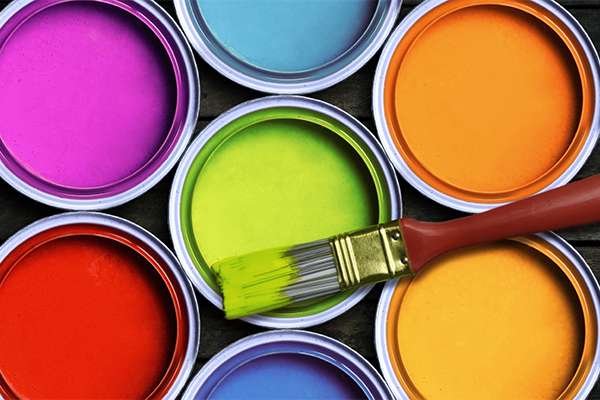When it comes to revamping your vehicle, the significance of paint prep cannot be overstated. Think of it as the silent groundwork for a masterpiece. The idea of transforming a car by merely slapping on a new coat of paint often brings to mind visions of vibrant colors and smooth finishes. However, to truly unlock the aesthetic brilliance of new paint, a meticulous prep process is vital. This guide is designed to lead you through each crucial step of preparing a car for paint, promising to shift your perspective on this often-overlooked aspect of auto restoration.
Before diving headfirst into the myriad of preparations, let’s contemplate the philosophy behind paint prep. It’s not just about aesthetics; it’s about the longevity and durability of the finish. A properly prepped surface allows the paint to adhere firmly, preventing unsightly peeling or chipping that can arise from neglecting this integral step. So, let’s embark on this journey of transformation with an eye toward precision and attention to detail.
Step 1: Gather Your Tools and Materials
The first step in this transformative endeavor is gathering the necessary tools and materials. A well-prepared workspace is paramount. Ensure that you have:
- Sandpaper (grit levels ranging from 80 to 400)
- Masking tape and paper
- Paint stripper (if necessary)
- Primer
- Quality paint
- A spray gun or paint sprayer (for larger surfaces)
- A clean, lint-free rag
- Protective gear (gloves, goggles, and a respirator)
Having everything at your disposal will streamline the process, allowing you to flow from one step to another without interruption. This preparatory phase is akin to an artist ensuring their palette holds every necessary color before commencing a masterpiece.
Step 2: Choose the Right Environment
Equally essential is the environment in which you choose to work. Ideally, find a dry, dust-free area, away from direct sunlight or any moisture that could compromise the painting process. A garage or a well-ventilated workshop works wonders. By establishing the right atmosphere, you create an oasis for your vehicle, free from external disturbances that could mar the finish.
Step 3: Wash the Car Thoroughly
Before touching the surface, give your car a thorough wash. Utilize a high-quality car soap and a scrub mitt to eliminate dirt, grease, and grime. Pay extra attention to areas where grime tends to accumulate, such as wheel arches and the undercarriage. Rinse thoroughly and dry with a microfiber towel. This step is crucial to avoid embedding dirt into the paint during the sanding process.
Step 4: Inspect the Surface
Once your vehicle is clean and dry, inspect the surface carefully. Look for imperfections such as rust, chips, or scratches. These blemishes should be addressed before proceeding. If rust is present, it must be meticulously sanded down using coarse sandpaper (around 80 grit) until you reach bare metal, and then treated with a rust inhibitor to prevent further corrosion.
Step 5: Sand the Surface
Sanding is where the magic begins. Start with a coarse grit sandpaper to eliminate the existing paint and create a texture for the new paint to grip onto. Move systematically, ensuring that you cover every inch of the surface. As you sand, be mindful of your pressure; applying too much can lead to uneven surfaces. Once the first layer is removed, switch to a finer grit (around 220) to smooth out the surface.
For smaller areas or detailed spots, consider using sanding blocks or a DA (dual-action) sander. Remember to keep the surface cool and moist as you sand to prevent damage. The goal is to achieve a smooth, even surface that invites new paint to lay down beautifully.
Step 6: Clean the Surface Again
After sanding, cleaning the surface again is a must. Use a degreaser to eradicate any lingering dust or oils that might hinder the paint’s adherence. Wipe the surface with a lint-free rag, and allow it to dry before moving on. Think of this as the final touch before the canvas is ready for the artist’s brush.
Step 7: Masking and Covering
Now it’s time to protect areas that shouldn’t be painted. Mask off the windows, trim, and areas adjacent to the parts being painted using masking tape and paper. This phase is not merely tedious; it’s an art form in itself. A well-masked vehicle presents clean lines and a professional finish, while poor masking will only invite messy results that can ruin your hard work.
Step 8: Priming the Surface
With everything prepped and masked, apply a primer suited for the type of paint you’ll be using. A primer serves multiple purposes: it increases adhesion, blocks stains, and provides an even base for color application. Use a spray gun for an even coat, ensuring that you layer the primer without oversaturating any one area. Allow it to dry thoroughly before sanding it lightly with fine-grit sandpaper for an ultra-smooth finish.
Step 9: Painting
Finally, the moment you’ve been waiting for: painting! Mix your paint as per the manufacturer’s recommendations, and pour it into your spray gun. Start from the top and work your way down, applying multiple thin coats rather than one thick coat. This technique will lead to a more uniform and resilient finish. Allow each coat to dry as per instructions before applying the next.
Step 10: Curing and Finishing Touches
After applying the desired color, allow the paint to cure completely. This may take several days, depending on the paint type and environmental conditions. Once cured, remove the masking tape carefully, and touch up any edges that may need an additional coat. Consider buffing the surface lightly to impart an exquisite sheen that glistens beneath the sun.
Returning your vehicle to its original glory—or even beyond—requires dedication and patience. Paint prep may seem laborious, yet it is undeniably rewarding. As you step back to admire your handiwork, you’ll realize that every second spent in meticulous preparation has transformed not just your car’s appearance, but your appreciation for the art of automotive restoration.
